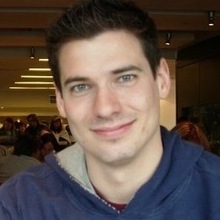
I was greeted to Rochester upon arrival with a bit of a head start than most. My wife (girlfriend at the time) presented to me a 5-page, front and back, laminated guide to all things Rochester. It showed me where the closest coffee shop was, where the Library is found, what events are good to attend, and maps on how to get around. Her passion and love of this city was infectious, and now I find myself with that same passion and zeal for this town. I want to share it to every new resident, nurse, and student, as fervently as an evangelist for this fair city.
One of the key factors that has kept me here is not just what this mini-metropolis offers now, it’s the potential that it holds to be an even greater city. We find ourselves at a time where we are limited only by our imaginations, and the power to collaboratively build the future of this city.
I look at this community as one that is like none found anywhere else, and is truly a gem to the state, and the country. For those of my generation, and younger, change is a normal part of life. We haven’t known a life of stability like those before us, and change, to us, brings something better and innovative. My wish is that these changes bring us together as a community, and we work together to build something great for ourselves, our children, and their children. I am excited to be a part of the change that is happening, and proud to call Rochester home.
What excites you about DMC and the future of Rochester? Join the conversation by adding your comments below.
AJ Montpetit is a social media consultant.


 As one of the world’s most respected medical research and treatment centers, Mayo Clinic is known for its ongoing innovations in health care. And now there’s another breakthrough: Using custom apps for physicians and patients on iPhone, iPad, and iPad mini, Mayo is transforming the capabilities of individualized patient care.
As one of the world’s most respected medical research and treatment centers, Mayo Clinic is known for its ongoing innovations in health care. And now there’s another breakthrough: Using custom apps for physicians and patients on iPhone, iPad, and iPad mini, Mayo is transforming the capabilities of individualized patient care.
